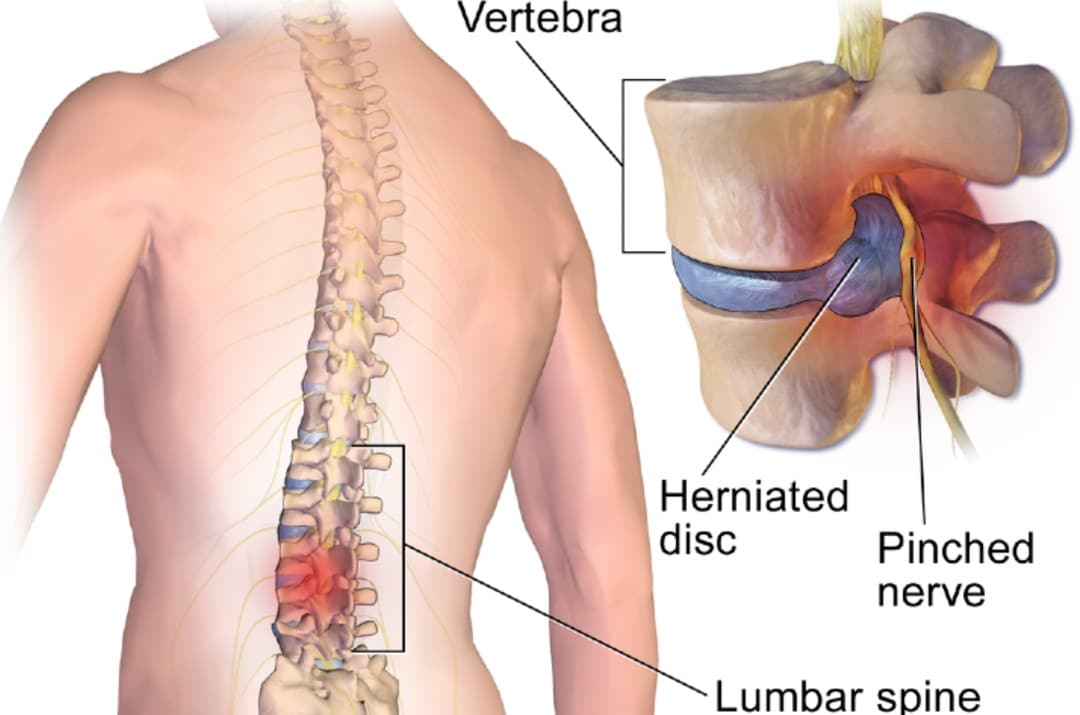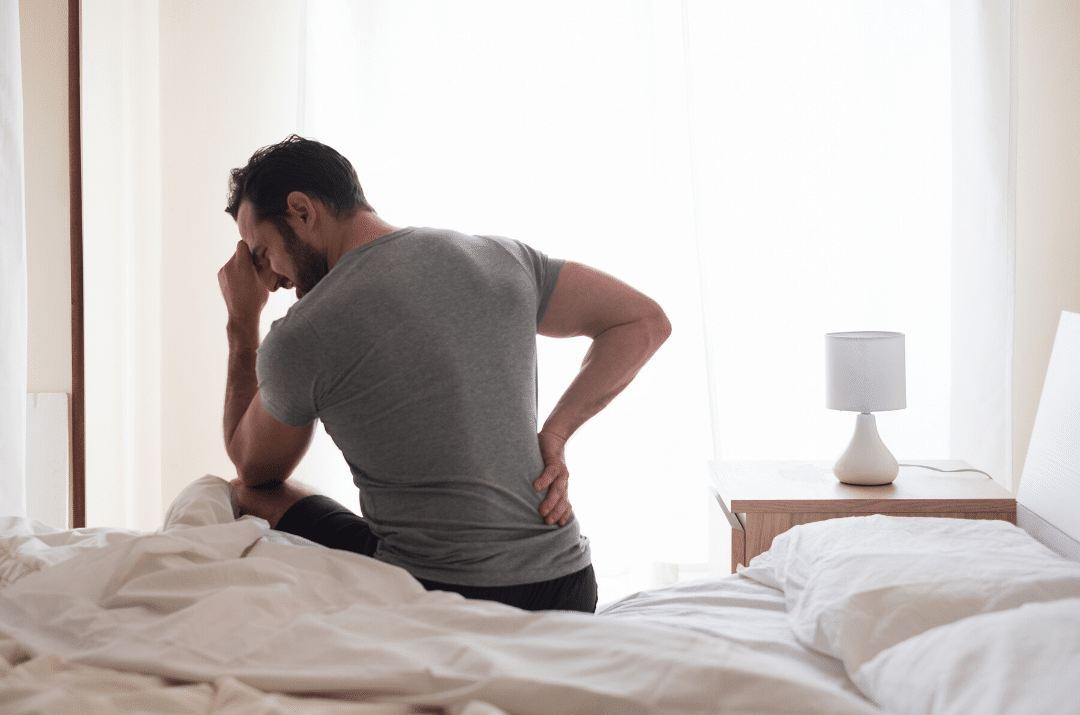Do you suffer from lower back pain symptoms? Is it difficult to get out of bed in the morning, to move easily, or to live free from the worry that spasms might set in at any time?
Back pain is frighteningly common. Over the course of your life, your chance of experiencing lumbopelvic pain when sitting is between 50 – 80%. For some people, this discomfort is ongoing. 20% of those who develop lower back pain will still have symptoms a full year later, with 1 in 10 being unable to work.
Let’s delve deeper into the causes and symptoms of lower back pain, and what you can do to relieve the ache—including complementary medicine treatments (more on that towards the end of the article).
What is Lower Back Pain?
The lower back supports a great deal of weight and provides flexibility and motion. It’s an incredibly complex and specialized structure, a multitude of both stable and moving parts. This region consists of the lowest five vertebrae, the two pelvic bones, the tail bone, and its joints, discs, muscles, fascia, nerves, and ligaments.
If you’re feeling confused – you’re not the only one! In simpler terms, your bones are connected to ligaments, which act like rubber bands to allow movement and flexibility. Your nerves are like electric circuits. They send signals to your brain to relay information about your body and its surroundings.
A lower back pain diagnosis refers to a specific ailment that is responsible for the physical discomfort of the lumbar and pelvic region – in other words; your lower back and buttocks.
Common causes of pain include:
- joint dysfunctions
- inflammation
- sprains or strains
- disc bulge
- herniation
It is not always possible to determine a cause for lower back pain symptoms.
How Long Do Lower Back Pain Symptoms Last?
Fleeting, intermittent or consistent are all terms that can be used to describe lower back pain. Because of these variations, a diagnosis can be defined as acute, subacute or chronic.
- Acute pain often occurs as a result of an injury. It may be present for days to weeks and tends to disappear as the body heals.
- Subacute pain lasts between six weeks to three months and often stems from a mechanical source. If it interferes with your ability to function, it is important to seek professional advice.
- Chronic pain is diagnosed after three months of persistent physical discomfort. Aside from reaching its painful tentacles into different areas of life, ongoing pain can result in an increased risk of mental illness or be a sign of a serious underlying condition.
It’s always recommended to speak to a health professional to determine the right lower back pain diagnosis and what treatment is most appropriate.
Get back on your feet. Relieve your pain naturally >>

Lower Back Pain Symptoms That Can Indicate A Serious Problem
There are a range of symptoms that indicate the presence of a lower back problem. The first, of course, is localized pain:
- Aching
- Stiffness
- Burning
- Spasm
- Tightness
An injury that damages a vertebra or disc can also potentially lead to a serious, underlying issue.
This is because these areas lie near exit points where the nerves travel through the lumbar spine, and an injury can damage them and cause leg pain or weakness. Disc bulges, herniations, arthritis, fractures and tumors can all reduce the space needed for the nerves to travel safely, leading to potential problems.
There are also other red flags that warrant seeking urgent professional advice. If you have any of these symptoms, seek a medical opinion promptly:
- Severe pain
- Pain following trauma
- Weakness in your leg or legs
- Unexplained weight loss
- Fever
- History of malignancy
- An inability to find a comfortable position
Note: If you lose bladder or bowel function, or feel numb in your saddle area, this may indicate a medical emergency. See your medical doctor immediately.
Lower Back Pain Diagnosis: What Do You Need to Know?

Most back pain is mechanical in nature, whereupon the components of your back from the spine and muscles to the nerves are not working together optimally. You could have herniated disc — a compressed, bulging intervertebral disc disc that pinches your nerves and sends shooting pain through your back, hips, and legs for instance. Or you could have a sprain from overstretching or strain, a little tear in your muscle and tendon from twisting or lifting improperly.
Your diagnosis will depend, in part, on which health professional you choose to see. It A good health professional will take a detailed history.
Questions will include:
- When did the pain start?
- What does it feel like?
- Where does it hurt?
- Have you had any falls or trauma?
- Do you have any pain, numbness or weakness in your legs?
- Have you been unwell, experienced any unexplained weight loss, or do you have any other conditions?
Then you should be assessed. The assessment will help your practitioner to isolate where the problem is and decide what it likely happening in your lower back.
The assessment may include:
- Palpating different areas of your back
- Asking you to perform certain movements
- Testing your strength and sensation
If there are no red flags, like those mentioned above, a conservative approach may be taken. A chiropractor, osteopath, physiotherapist or massage therapist will decide on the most appropriate type and frequency of care. A medical doctor may prescribe medications, advise lowering your activity levels for a time, and use a wait-and-see approach.
If your history, assessment and presentation warrant it, you may be referred for further tests, such as an x-ray, MRI or a CT scan.
Finding Lower Back Pain Relief
While lower back pain symptoms can stop you in your tracks, there are a range of evidence-based treatments to quell your discomfort, such as physical therapy and topical pain relief products.
Physical Therapies
Physical therapy is an appropriate, effective treatment for mechanical lower back pain. Spinal adjustments, massage, stretching, and acupuncture provide proven approaches to calm your pain.
Topical Ointments
Topical ointments can soothe discomfort through direct application to the skin. Well-loved, effective and traditional ingredients include camphor and menthol. These natural compounds, when applied to the skin, cause a cooling sensation that distracts the pain signals in the brain for relief. CBDMEDIC™’s Neck & Back Pain Ointment provides much-needed temporary relief that people with lower back pain symptoms love.
Don’t Be Discouraged: Relief for Lower & Middle Back Pain is Possible
While experiencing lower back pain is common, there is much you can do to ease discomfort. Once your lower back pain diagnosis is established, appropriate treatment approaches can begin. Take advantage of physical therapy, stretching, and a high-quality topical ointment for relief and recovery. And get back on your feet.

Disclaimer: This information is for educational purposes only. It has not been approved by the FDA to diagnose, treat, prevent, cure, or mitigate any diseases or conditions. We use CBD in our products for cosmetic purposes only.


